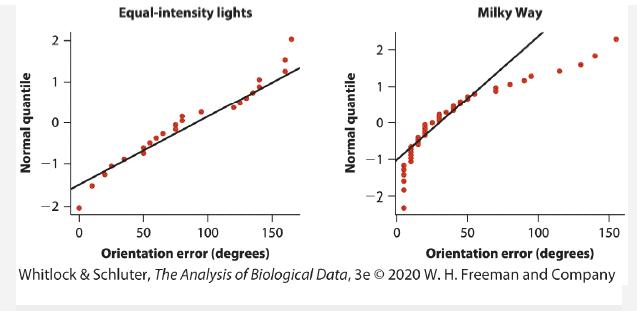The Milky Way appears as a massive band of stars across the night sky. The nocturnal dung
Question:
The Milky Way appears as a massive band of stars across the night sky. The nocturnal dung beetle (Scarabaeus satyrus) is known to use this band of illumination for orientation. After sculpting a fresh dung ball, an individual beetle rolls it away from the dung pile to be buried some distance away. On moonless nights, the beetles use the Milky Way as a cue to maintain straight-line travel away from the dung pile. Foster et al. (2017) simulated patterns of illumination in experimental arenas to investigate which features of the Milky Way were used as orientation cues.
Individual beetles were randomly assigned to one of two treatments, each with the same overall level of illumination. In the “Milky Way” treatment, the beetles were exposed to artificial illumination in the pattern of the Milky Way. In a control treatment, the light in the arena was of equal intensity in all directions. The researchers recorded each beetle’s “orientation error” (the difference in a beetle’s two directions away from a dung pile, relative to stimulus orientation, when tested twice). Stimulus orientation was changed between the two trials for each beetle.

a. The figure shows normal quantile plots of beetle orientation errors in the two groups of beetles. Each dot is the orientation error of a single beetle. Which frequency distribution of orientation errors deviated most from the normal distribution? Explain how you determined this.
b. The data below are measurements for 10 randomly selected beetles from each group. Use the data and the Mann–Whitney U-test to test whether the distribution of orientation errors differs between beetle groups under simulated Milky Way and equal-intensity illumination conditions. Optional: Instead, use a computer to analyze the full data set available at whitlockschluter3e.zoology.ubc.ca.

Step by Step Answer:

The Analysis Of Biological Data
ISBN: 9781319226237
3rd Edition
Authors: Michael C. Whitlock, Dolph Schluter





